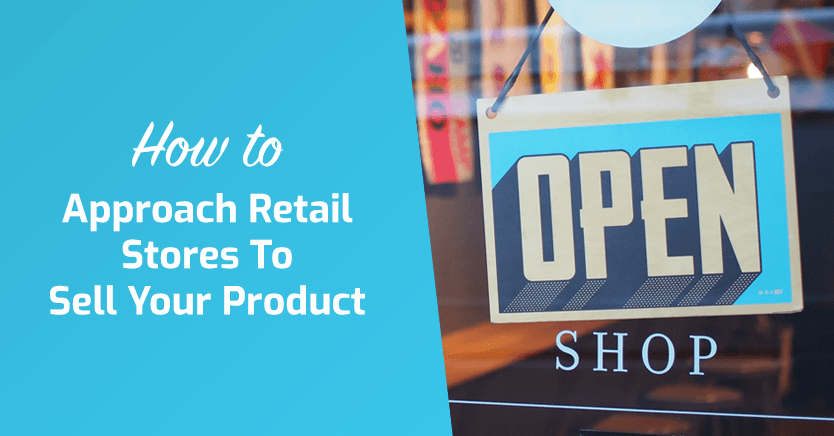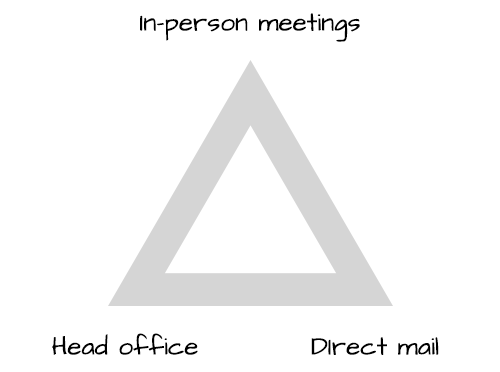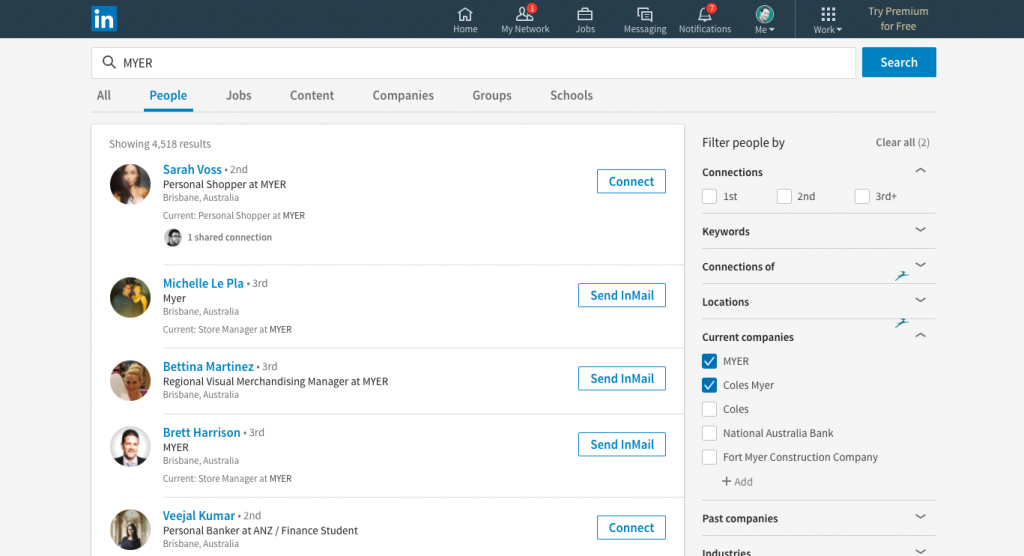How To Get Your Product Into Small Stores

Learning how to approach retail stores to sell your product is a great skill for wholesale distributors to have in their tool belt. In 2021, it's even more important to know the right strategies for doing this.
Whether you sell your products primarily online or if you just want to expand your reach, selling to retailers is a fantastic way to boost revenue, create brand awareness and build the kind of network connections that you need to be successful growing a wholesale distribution business.
Getting your products into the retail sector via traditional retailers can be a fantastic growth strategy.
It can also do wonders for your product, your business processes and also for the health of your business as a whole.
- Selling to retail stores forces you to get more serious about packaging
- It highlights how important it is to have proper profit margins on your products
- It means your shipping and logistics processes needs to be rock solid
- And you must have a plan to handle extremely large volumes if required
How To Approach Retail Stores To Sell Your Product
Like anything in business, you have to start from somewhere and that's what this article is all about. In this massive guide below we'll be digging into the nitty-gritty details so you will know exactly how to approach retail stores to effectively sell your product.
Let's get stuck into it…
Selling Wholesale To Retailers
There are a number of key differences between retailers and other non-retail wholesale customers:
- Retails stores have bigger overheads due to costs like rent, sales staff, fixtures, signage, furnishings, and more
- The cost to start a retail store is at least 5-10x higher than online-only retailers
- Retail stores generally hold more stock on hand
- The larger the retail chain the more organized their procurement will be
- Product appearance is very important
- The margins are thinner
- Foot traffic and profit per square meter are important figures to monitor in retail stores
So how do these factors affect how to sell your wholesale goods to these businesses?
By looking at their differences you begin to understand how selling to retailers can be a whole different ball-game than selling to other businesses with lower overheads and complexity.
The retail model, while it looks simple on paper, is full of hidden costs that affect how much they can afford to pay for goods and what kinds of markups they're looking for in a retail situation.
What Do Retail Stores Focus On?
The main focus for retail stores is maximizing their foot traffic, aka bringing customers in the door.
They do this primarily by:
- Store positioning (which is why choosing a good location is so important)
- Running sales
- Stocking desirable product lines
- Reward programs
When a retail store succeeds in bringing enough foot traffic in the door, the profit usually follows.
How Do I Sell Wholesale To Retailers?
Selling wholesale to retailers is a little bit different from selling direct to consumers. Retailers have different needs and they will want to examine your product to see if it is a good fit before stocking it or making a large order.
There are 3 primary ways to approach retailers:
- In-person – you take your wholesale products and show them in-person so the retailer can see what they're like
- Head office meetings – you take your wholesale products to the head office of a conglomerate or major buyer to be considered
- Direct mail – you directly contact the retailers to ask if they will stock your products

We recently published an update to our huge guide on wholesale marketing strategies for 2021 that wholesale distributors can use to attract customers, get orders and increase sales.
In our previous guide, we recommended starting to market to retailers by creating a list of your top 100 ideal retailers that you'd like to be stocked in. These would be the stores that you'd justloveto get your product into.
Based on experience, I can tell you that the first 20 on your list will be easy to come up with, but getting the next 80 on the list will be a challenge. You'll need to enter research mode to find the retail stores that will fit the criteria that you're after.
However, if you want to sell wholesale to retailers you need to learn how to approach them and that starts with making a list and making contact one by one. There is not automated shortcut here, so stop looking for one.
1. In-Person: Demonstrate & Sell
If you want to be a hands-on business owner you definitely need to consider actually visiting the retail stores that you are trying to recruit as customers.
In-person visits have a number of benefits:
- You can demonstrate the product
- They can feel the product and use it
- People find it harder to say no when you're standing right there
Being able to demonstrate your product to a store owner means they get to feel the product, see it in action, hear about how it can help them and their customers and you can answer any questions and objections straight away.
Later I'll discuss exactly how to pitch your product to a store, step by step.
2. Head Office: The Top-Down Approach
For large groups of retail stores or retail chains, you will need to approach the head office of the group directly. Often these chains will have group procurement, so it's a matter of finding out how their internal structure is set up and who you would need to talk to.
Getting in touch with the right people might be tricky, but you can often start at the store level by talking to a store manager and asking lots of questions. 9 times out of 10, you will get the details you need directly from them.
If it's proving tricky, you can use LinkedIn as a tool for locating the exact person you should be speaking to.
Simply go to the LinkedIn homepage and search for the company group by name and you can click on the People tab in the search results:

If you're not sure what the group company is called they often list it in the footer on the retail store's website. You can then plug that company name into LinkedIn and find the connections you need.
Conducting research like this is really important because you need to be sure are talking to the decision-makers.
Schedule appointments ahead of time and make sure you are well prepared for the meeting. Take along products for demonstration and free samples and give them everything they need to know to make a decision.
If you're having trouble closing the deal you can try a "puppy dog close". A puppy dog close is named after the method some pet stores use for selling dogs, "Just take it home with you for the weekend and see what you think!".
Adapt the puppy dog close and propose a trial with a few stores to see how it goes. You can even offer free shipping or extra units to make it as risk-free as possible.
3. Direct Mail: Write An Introduction Letter To Retail Buyers
Using direct mail is a scalable way you can attract retail stores as wholesale customers.
If you write an introduction letter to retail buyers along with sending them a sample of your product, you are sure to get their attention.
It's a process often called "Lumpy Mail" – the theory is that if you send the right person something that looks odd-shaped in the mail, and if that parcel is personally addressed, it will be more likely to be opened and considered.
Manufacturers have used the free sample approach to distributors for years and you can adapt it to your level as well. By sending a free sample you are giving them something tactile that they can feel and use which is better than just looking at pictures and videos.
When accompanied by a written introduction letter to retail buyers that is personalized to them, it can be a very powerful way to generate leads at scale.
To make direct mail successful for your business follow these three rules:
- Research & personalize – direct mail works best when you personalize it to the recipient
- Send daily – consistency is key if you want a good lead flow
- Follow-up – always follow up with a phone call a few days after you know the parcel was delivered
Sample Letter To Retail Buyer
If you are going to write an introduction letter to retail buyers it might help to start with a sample letter.
I thought I'd give you a sample letter to a retail buyer that you can actually use right away. Just print it off on your letterhead and include it with a sample of your product and a product sales sheet (more on that in a moment).
In this short introduction letter, we get straight to the point of introducing who we are and what we do, then tell them why we're writing to them.
It's important that you be succinct and clear about this – as with any marketing activity you only have a few seconds to grab and hold their attention.
[SUBJECT LINE]
Suggestions:
– ARE YOU THE RIGHT PERSON TO SPEAK WITH?
– I FOUND YOU THROUGH [NAME]
– REGARDING [X] PRODUCTSHi [PROSPECT NAME],
I'm [YOUR NAME] a co-founder at [YOUR COMPANY], we're in the [NICHE] space. We make [XYZ PRODUCTS].
Just wanted to send you a free sample so you could get to know our product, [SPECIFIC PRODUCT] and see if [PROSPECT COMPANY] might be interested in stocking it.
I've also included a product sales sheet containing some more information about the product and our company for your review.
You can also see a video of it in action here: [SHORTENED URL] (optional line)
Is this something your customers would be interested in?
You can reach me directly at [MOBILE PHONE NUMBER] or [EMAIL ADDRESS].
Regards,
[YOUR NAME]
[YOUR COMPANY]
What are the techniques of selling?
Unless you're an experienced sales rep, knowing exactly how to pitch your product to a store might seem a bit daunting. And, to be honest, it's probably going to be something you learn on the job.
Knowing the right way to pitch your product to a store will give you a leg up if you don't know how to do face to face sales, and if you do know how to sell, the following will serve as a refresher and help you formulate your plan.
1. Get in the door
The first step is actually getting in the door.
We detailed above how to approach retail stores and if you are pitching your product with face to face sales then the result of that process should be you scheduling times to go and visit them.
Here are a few extra tips that will help you schedule more meetings:
- Be proactive and suggest 2-3 potential dates and times eliminating needless back and forth – "I'll be visiting over your way soon – does [X] at [Y] time or [A] at [B] time work for you? If not let me know your schedule for next week."
- Use a calendar scheduling app such as Calendly
- Tell them you're in the area (even if you're not)
2. Know your product and conduct a great product demonstration
Demonstrating a product is incredibly powerful. Inc.com put together a great article on how to give a great product demo.
I recommend you read the full article but here are the important highlights:
- Customize your demonstration to them – every customer is different so do your research
- Tell a story – people relate better if you involve the product in a story
- Rehearse – good sales reps prepare and rehearse the delivery multiple times
- Test everything beforehand – if your product has the possibility of breaking down, make sure you test it's all working before you walk in the door
- Close the deal – asking is something a lot of people forget to do, the best time to ask for the sale is right after the demo
3. Use a product sell sheet and leave that with them when you leave
What is a product sell sheet? It's a single piece of paper that tells your customer the key benefits of the product along with details on how to order.
A product sell sheet should clearly and concisely explain your product and its purpose.
Keep It Benefits Focused
I recommend you keep your sell sheet "benefits-focused", which just means tell the person what benefits your products give customers rather than just listing the facts and features of your product.
The heading of your product sell sheet should likewise focus on the key benefit, eg. if you had a cream that treats plantar warts your headline could be: "Scientifically proven to get rid of plantar warts in 3 weeks or less".
Break Up The Text
The temptation is to just write as much as you can to fit into your sell sheet.
Instead, I recommend you use bullet points, shorter paragraphs, subheads, customer quotes and call out sections to break up the text and give some life to your design.
Call To Action
Now is your time to ask for the sale – don't be shy.
Above-average salespeoplealways ask for the sale. If you aren't specifically asking people to order your product you'll be missing your opportunity. This is exactly what your product sell sheet is for.
Make a special callout box just for your call to action. It should draw the eye immediately. Make it another color, bold the text, give it space, whatever you have to do to draw the eye.
4. What if you can't secure a meeting and need to sell over email, letter or video conference call?
As I mentioned briefly earlier, if your product is physical then demonstrating is a very wise move. Doing it remotely might even be impossible.
You can send samples and literature but closing the sale via in-person demonstration is always going to be more effective.
Products such as software, however, lend themselves to remote demonstrations quite easily. It's definitely worth exploring, especially if your customers are spread across large geographic locations.
Once you are more established and you have retailers coming to you instead of the other way around, you might be able to reduce the number of in-person meetings you need to do and/or hire someone to focus on them for you.
Can A Business Be Both A Wholesaler And A Retailer?
You definitely can run your business as both a wholesaler and a retailer. This just means that you sell to both consumers and other retail businesses.
It's a very smart thing to do as it expands your reach in the market further than if you were just a retailer yourself.
Think of it as creating a team of people to expand the reach of your products.
We built our Wholesale Suite extensions around this very premise. It enables businesses who are traditionally only selling to retail customers to expand their business into wholesale sales by adding those features to their existing WooCommerce store.
How Much Should I Pay Retailers For Selling My Product?
How you price your products for wholesale sales is entirely up to you but there are a number of formulas you can use such as cost-based pricing or value-based pricing.
You can read more about pricing wholesale products for retailers here where we've discussed the topic in depth.
How To Sell Your Product Better In Retail Stores Once You're There
Selling your product better in retail stores comes down to three things:
- Better placement
- Packaging and visual desirability
- Training store staff
Now that you have a relationship with the retail store you will want to concentrate on improving these aspects and this can be done via quarterly catch-up call meetings, on-site visits, and working with your marketing team to improve your product's design and desirability.
Putting It All Together
Knowing how to approach retail stores to sell your product is very important for your wholesale distribution efforts, especially in the beginning.
Selling wholesale to retail customers can be very rewarding because you can see your product in real stores and real customers can come and try it and interact with it.
It can generate great brand exposure and give you access to local audiences you might never have been able to reach. Think of it like having a team of people selling your products into markets you would normally never have been able to reach.
Becoming a wholesaler and a retailer is a smart business strategy and one that can help your business grow.
How To Get Your Product Into Small Stores
Source: https://wholesalesuiteplugin.com/how-to-approach-retail-stores-to-sell-your-product/
Posted by: johninattleaces.blogspot.com

0 Response to "How To Get Your Product Into Small Stores"
Post a Comment